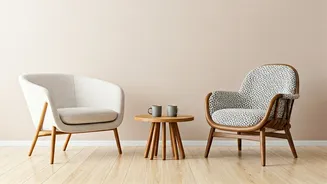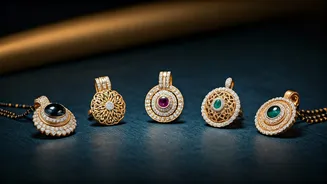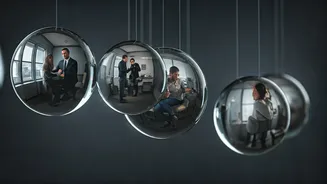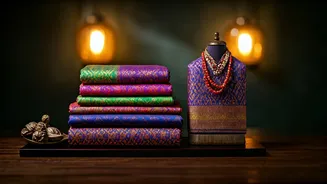Shared Experiences, Shared Styles
Relationships often involve a melding of two distinct worlds, where personal styles, preferences, and tastes intertwine and gradually align. Think about
it: early in a relationship, each partner typically maintains their own individual aesthetic, a reflection of their personality, background, and influences. However, as time passes and experiences are shared, a subtle transformation begins. Couples start adopting similar habits, visiting the same places, and engaging in activities together. These shared experiences, in turn, influence their individual preferences, including their style. They might begin to appreciate elements of their partner's aesthetic, which in turn influences their choices. This process is rarely a conscious decision; it's a natural byproduct of the emotional bond and shared life they are building together. For example, a partner with a penchant for bold colours may find themselves drawn to the other's preference for neutrals, and vice versa. It’s a mirroring effect, a visual representation of the intimacy they’re developing.
The Psychology of Alignment
Underlying the aesthetic convergence is a fascinating psychological dynamic. One key driver is the desire for closeness and validation. Humans are social creatures, and we inherently seek connection with others. As relationships deepen, partners subconsciously strive to build a shared identity, and aesthetic alignment becomes a visual expression of that unity. By adopting similar styles, couples signal to the world – and to each other – that they are a cohesive unit, a team. This also involves the concept of social proof; we often view the preferences of those we love and admire as attractive or desirable. When your partner enjoys a particular style, you may be more likely to embrace it yourself, even if you wouldn't have considered it before. This mirroring of tastes also serves as a subtle form of non-verbal communication, reinforcing the emotional bond and creating a sense of shared belonging. This can be seen in everything from the way they decorate their homes, to the brands they start to prefer.
Subtle Influences at Play
Aesthetic convergence isn’t about identical outfits. It’s far more subtle than that. The influence happens gradually and subtly, through shared experiences, compliments, and simply being around each other. One partner’s preferences gradually influence the other. A partner’s appreciation for minimalist design might inspire the other to declutter their home. Similarly, an affinity for vintage clothing could prompt the other to explore thrift stores. The influence extends beyond clothing and décor. Consider the music they listen to, the art they appreciate, and even the food they enjoy. These small shifts represent a dynamic interplay of personalities, where each partner adds their unique perspective to the shared aesthetic space. This constant exchange builds a visual vocabulary and a shared taste that becomes a hallmark of their relationship. Over time, couples develop a shared visual language, which becomes another layer of the bond they share.
Beyond Surface Level
While aesthetic matching is frequently observed in long-term relationships, it is important to remember that it is not about uniformity. It is more about a subtle integration of styles. Couples are not turning into clones of each other; rather, they are developing a shared sense of taste. This aesthetic convergence mirrors the emotional bond, reinforcing feelings of closeness and creating a stronger sense of shared identity. Understanding this dynamic can offer insight into how relationships evolve over time. It shows the ongoing negotiation of personalities and preferences. It provides an avenue for couples to see how their values and tastes continue to align. It can also be seen as an indicator of the relationship's overall health and the depth of connection between the partners. It is a visual cue of a relationship that has passed the test of time, where two individuals become one in taste, values, and vision.







